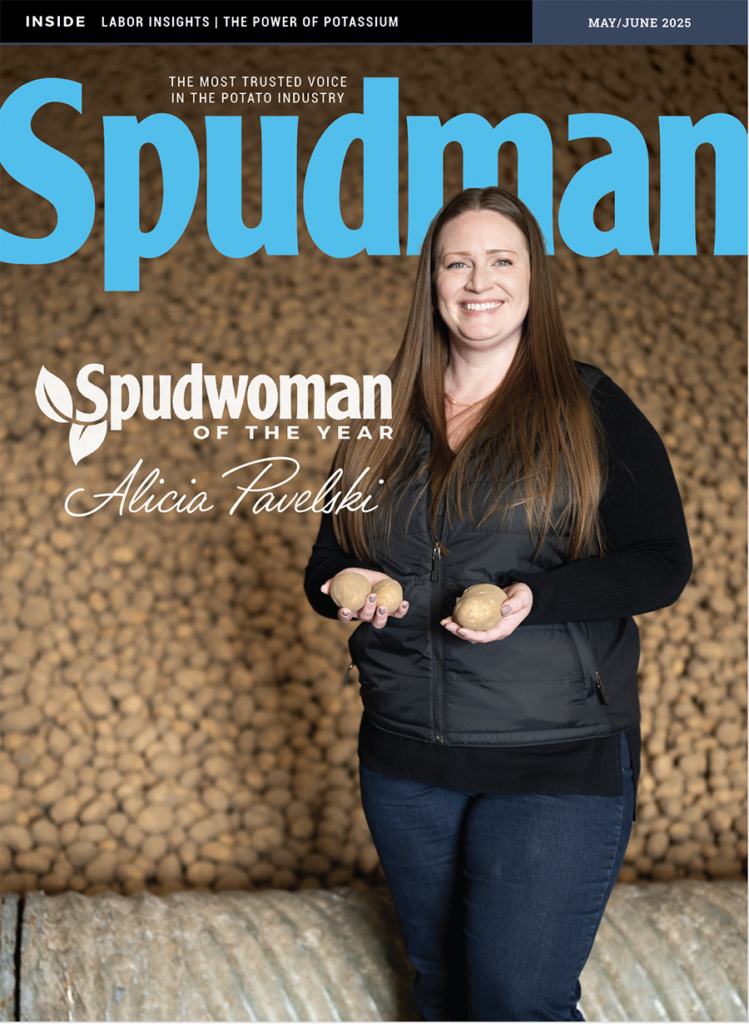Use chemicals wisely to preserve good insects and nematodes
Every field is teeming with life from nematodes to bacteria and fungi to insects and there’s a benefit to keeping it that way. There are often too many beneficial organisms lost during a broad-spectrum chemical application, so Bill Snyder, a professor of entomology at Washington State University, recommends using selective insecticides and biological controls to kill the bad bugs while preserving the beneficials.”
Parasitoid wasps are beneficial insects because they kill aphids that can introduce disease to potato plants. The wasps can also affect aphid behavior, with dying aphids flying to a “safe” location out of the field before dying. Spiders and predatory insects like ladybugs, damsel bugs and praying mantises are generalists that kill a range of potato disease vectors.
“They all feed on whatever they can catch so they’re not as picky as the parasitoid wasp,” Snyder said.
Nearly half the bugs that can be found in any field would be classified either as “big-eyed bugs” or damsel bugs. Big-eyed bugs are important beneficial insects because they eat aphid and beetle larvae. Damsel bugs are bigger, about a half-inch long, and are important predators because they feed on Colorado potato beetles.
Snyder conducted a study of “hard” broad-spectrum chemicals, selective “soft” chemicals and organic treatments and their effects on green peach aphid, Colorado potato beetle and beneficial insect populations.
The hard chemicals almost completely wiped out the beneficial big-eyed bugs in the test plots. The densities of big-eyed bugs in the organically treated fields were 10 to 20 times those in the hard chemicals, and the selective treatments were almost as good as the organic treatments, Snyder said. Damsel bugs fared about the same as big-eyed bugs in the research.
The fields treated with organic and soft chemicals had fewer aphids than test plots treated with hard chemicals. That is probably because the larvae survived the broad-spectrum treatments and there were no predators to kill them when they matured, Snyder said. Eliminating the predators allowed the green peach aphid populations to recover, resulting in a higher population in the hard-chemical treatment fields.
All three treatments controlled Colorado potato effectively, but population densities were lower in soft and organic treatments.
Moving away from broad-spectrum chemicals will allow beneficial insects to survive and supplement the chemicals that are being used. That’s essentially the goal of an integrated pest management program, Snyder said, and it will be even more important in the future as buyers are more concerned about the environment, sustainability and residues.
“The challenge is to find ways to take advantage of biocontrol,” Snyder said.
The other side of the biocontrol coin is the microscopic nematodes that also play a part in killing disease vectors, as well as play an important role in soil health. Nematodes are usually considered a bad thing, and that’s true when talking about plant parasitic nematodes like root lesion nematode, golden nematode or potato cyst nematode. But the use of beneficial nematodes called entomopathogens can supplement an IPM program and reduce the amount of chemicals needed. Currently, adding nematodes to a field is expensive, although there are researchers working on nematode treatments. Currently, maintaining soil health and not destroying beneficial nematodes is a better alternative, Snyder said.”














